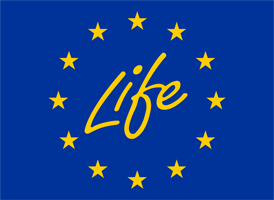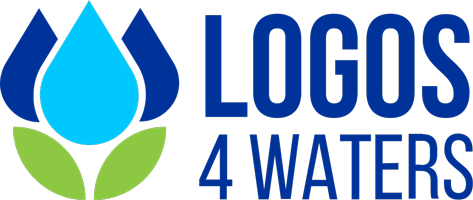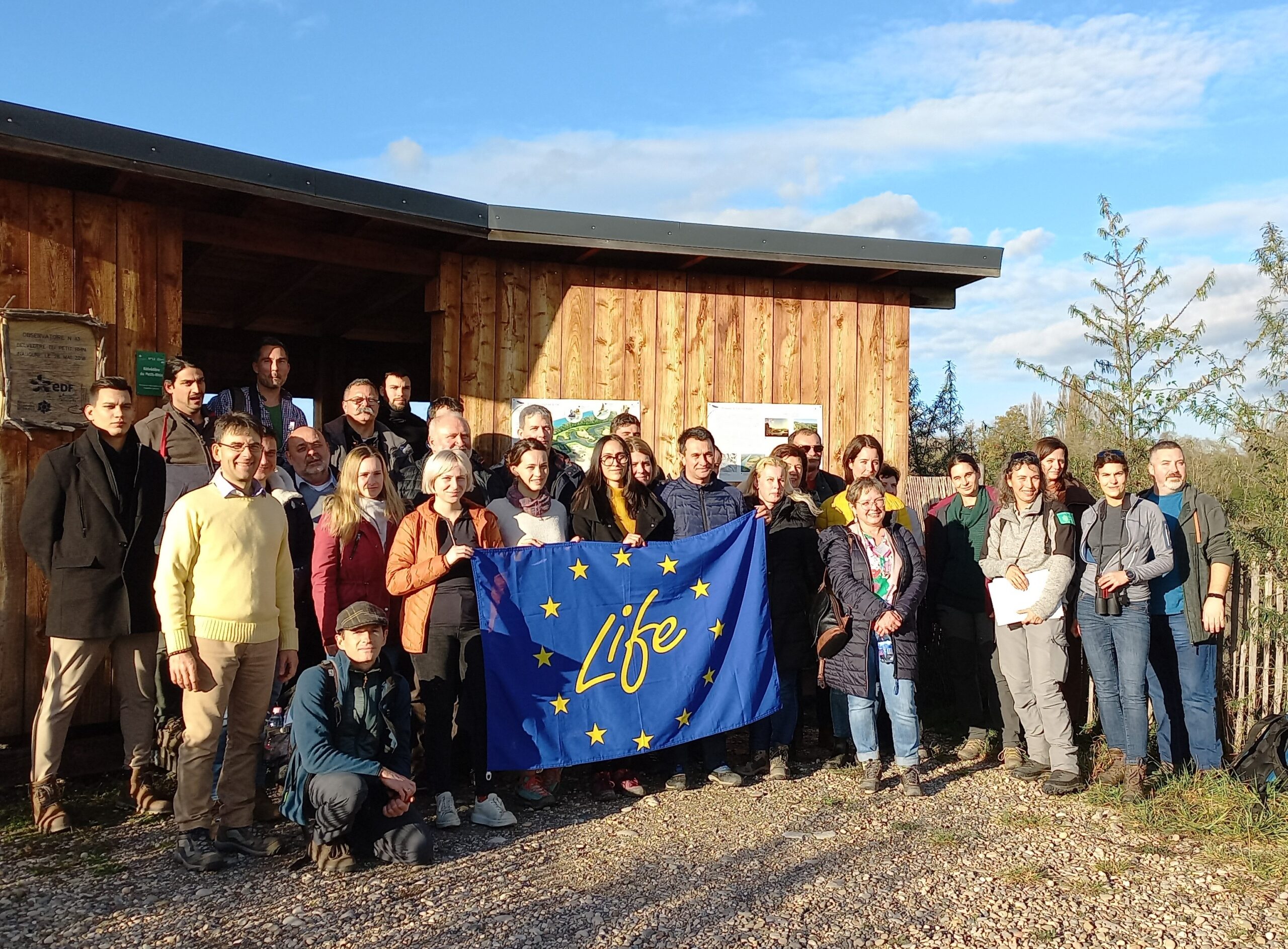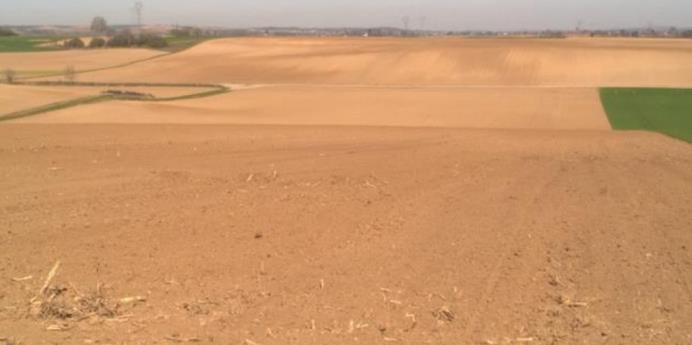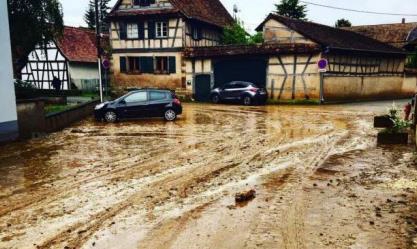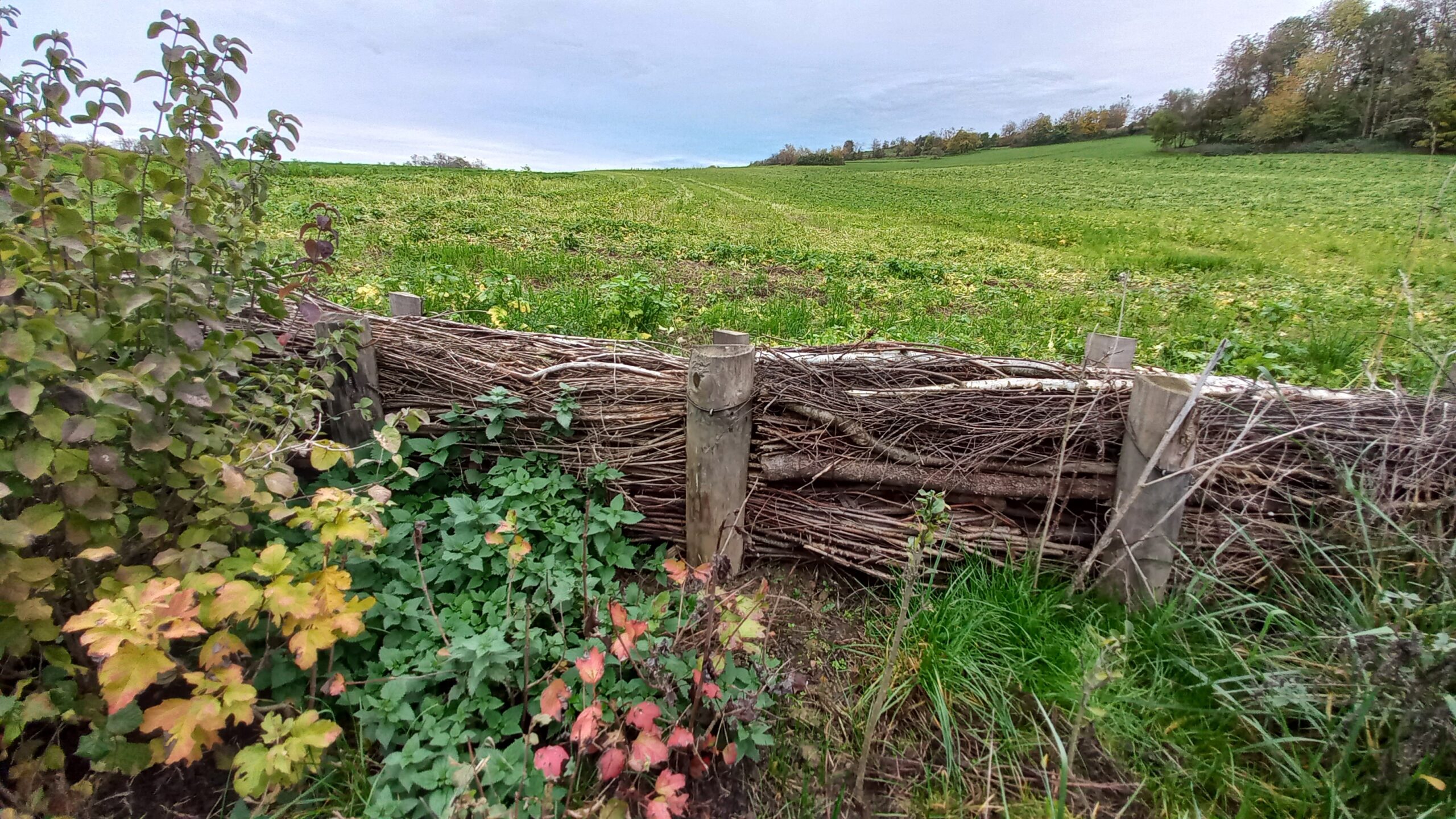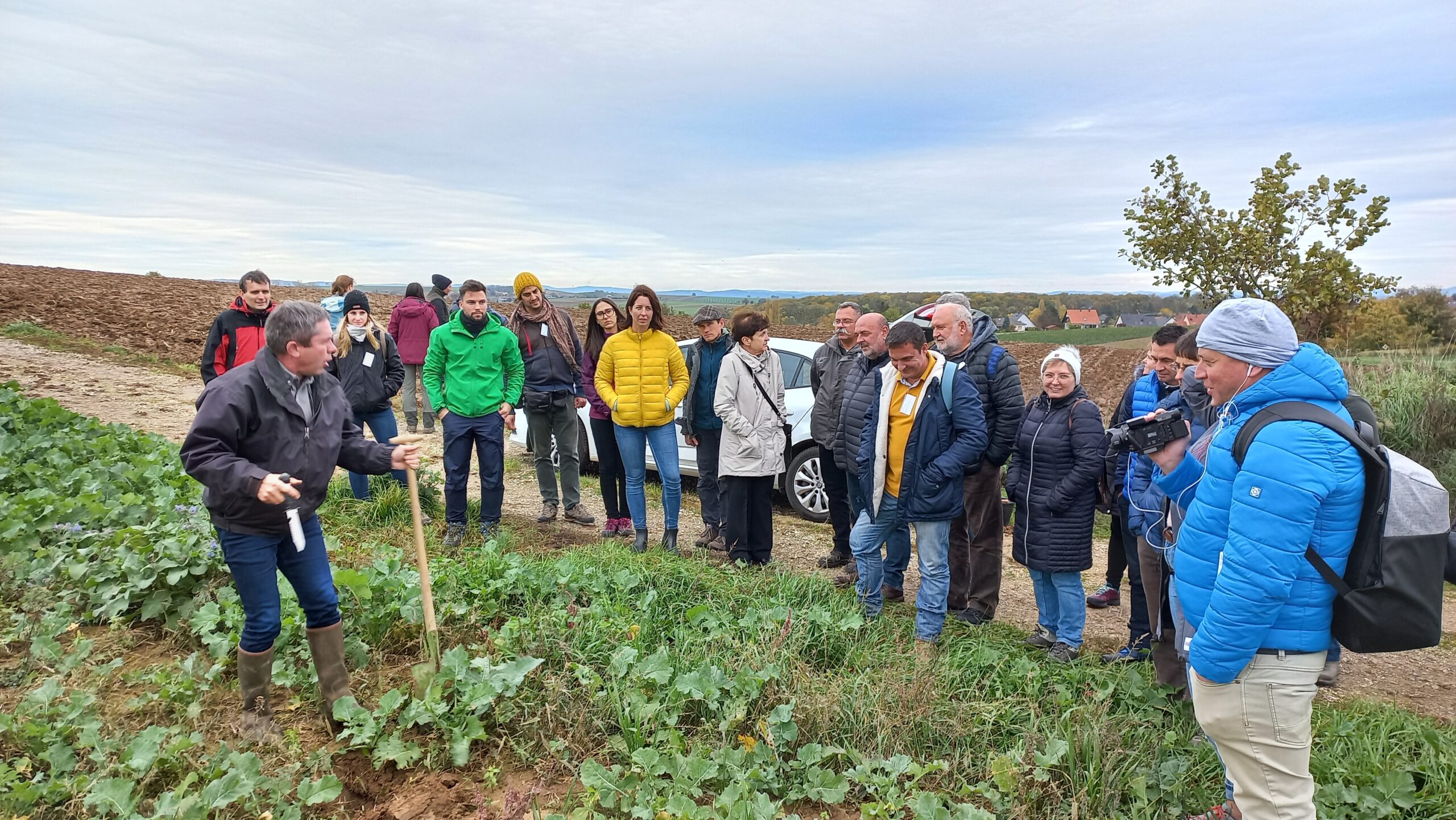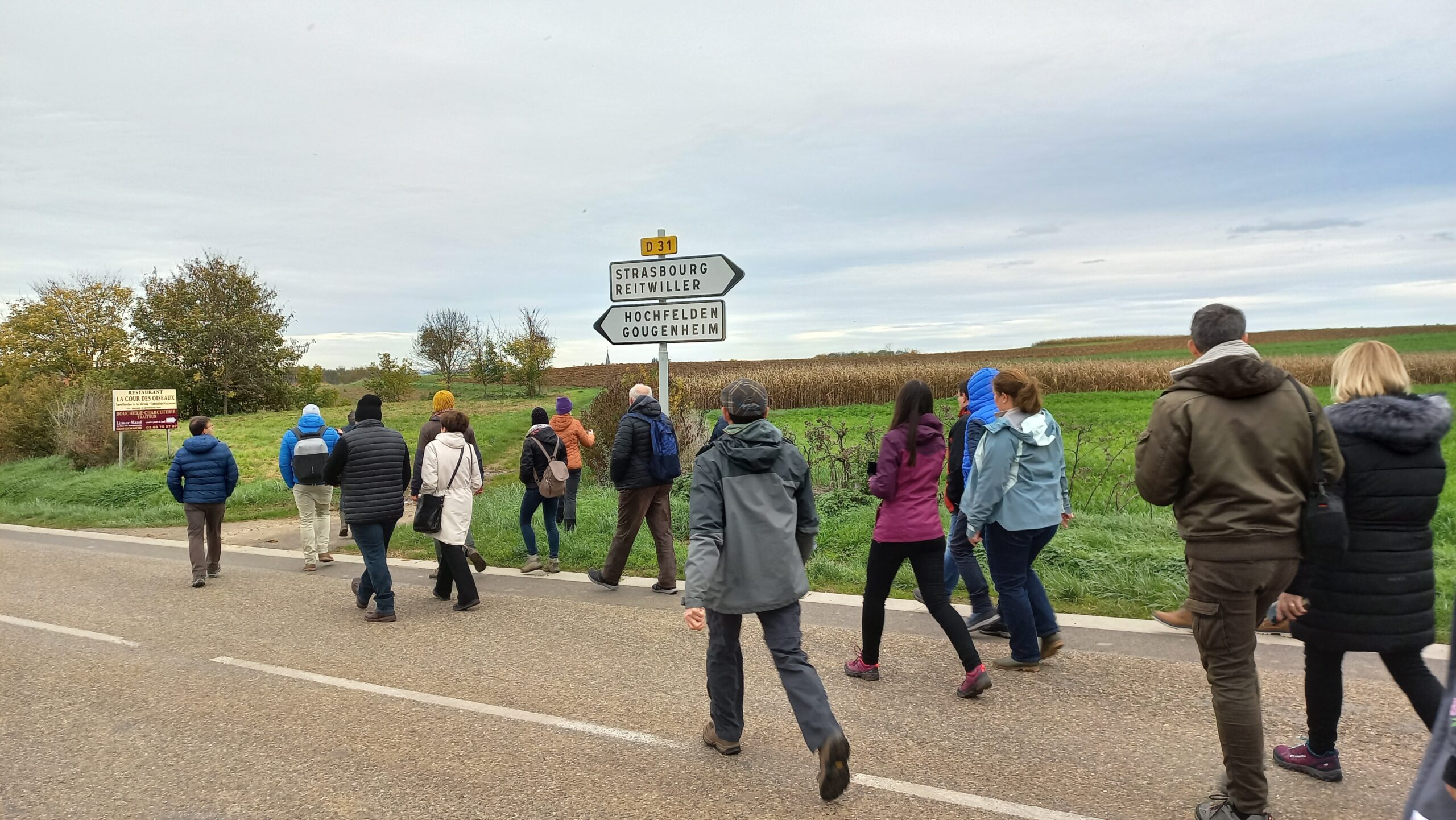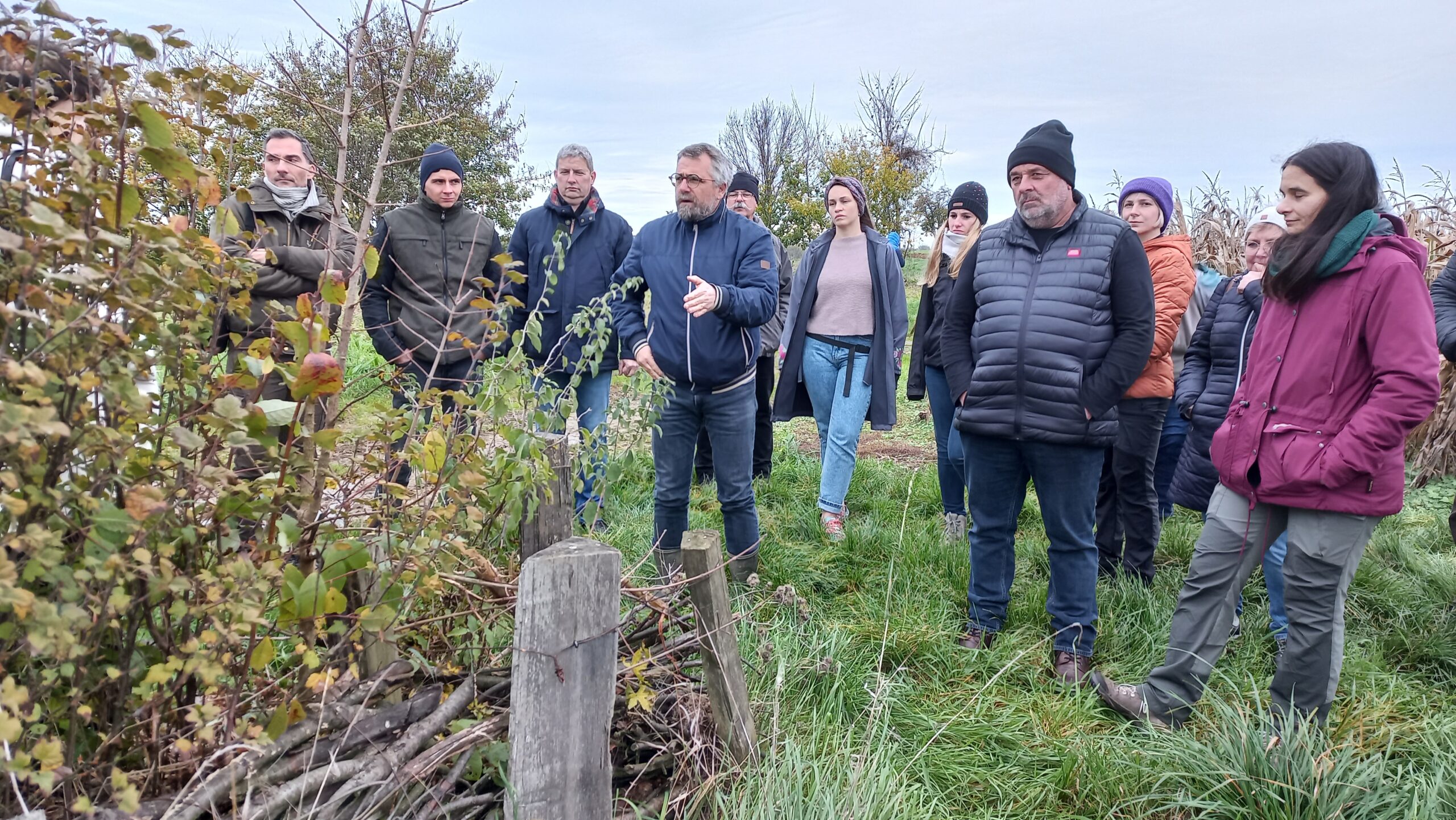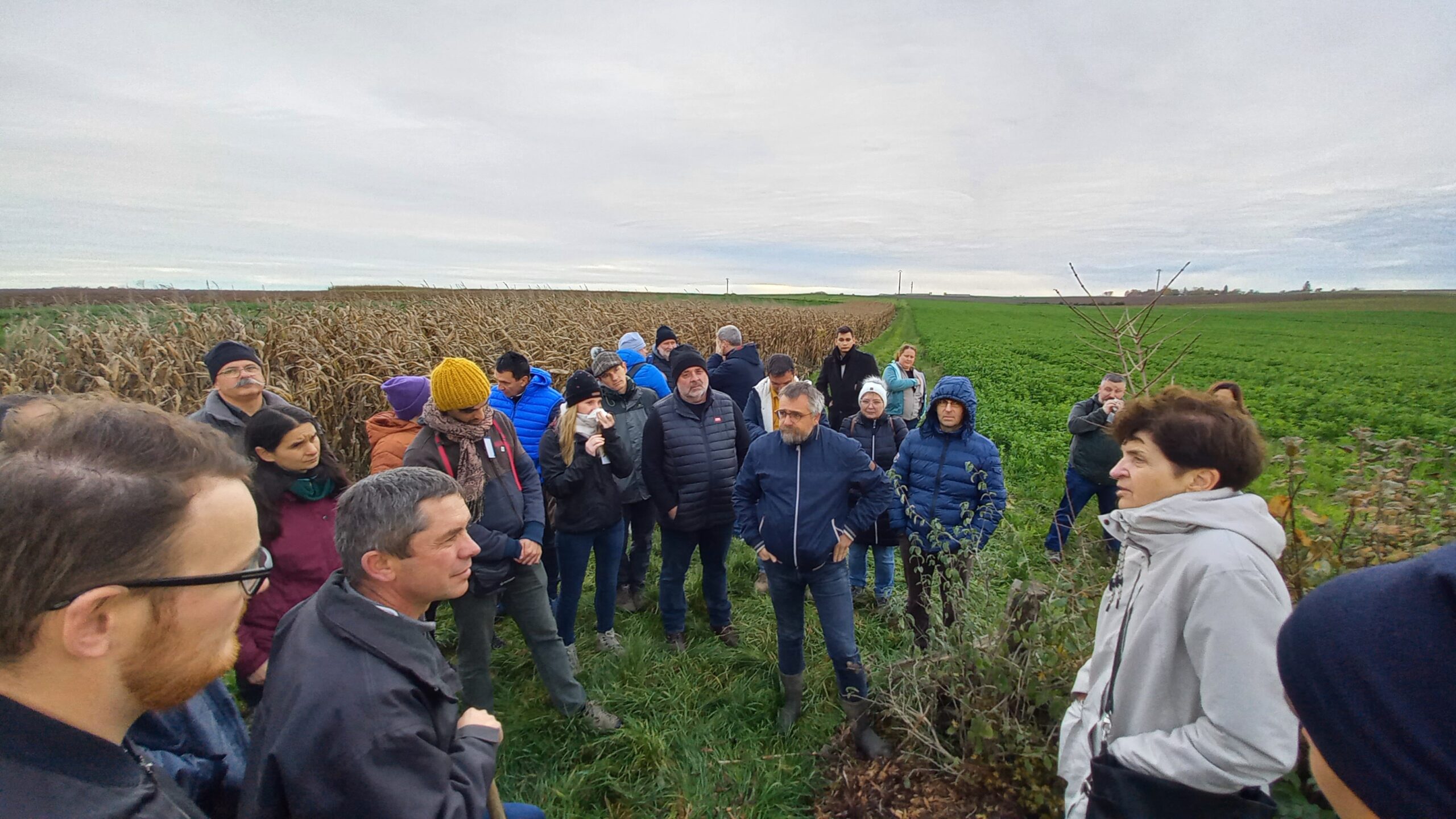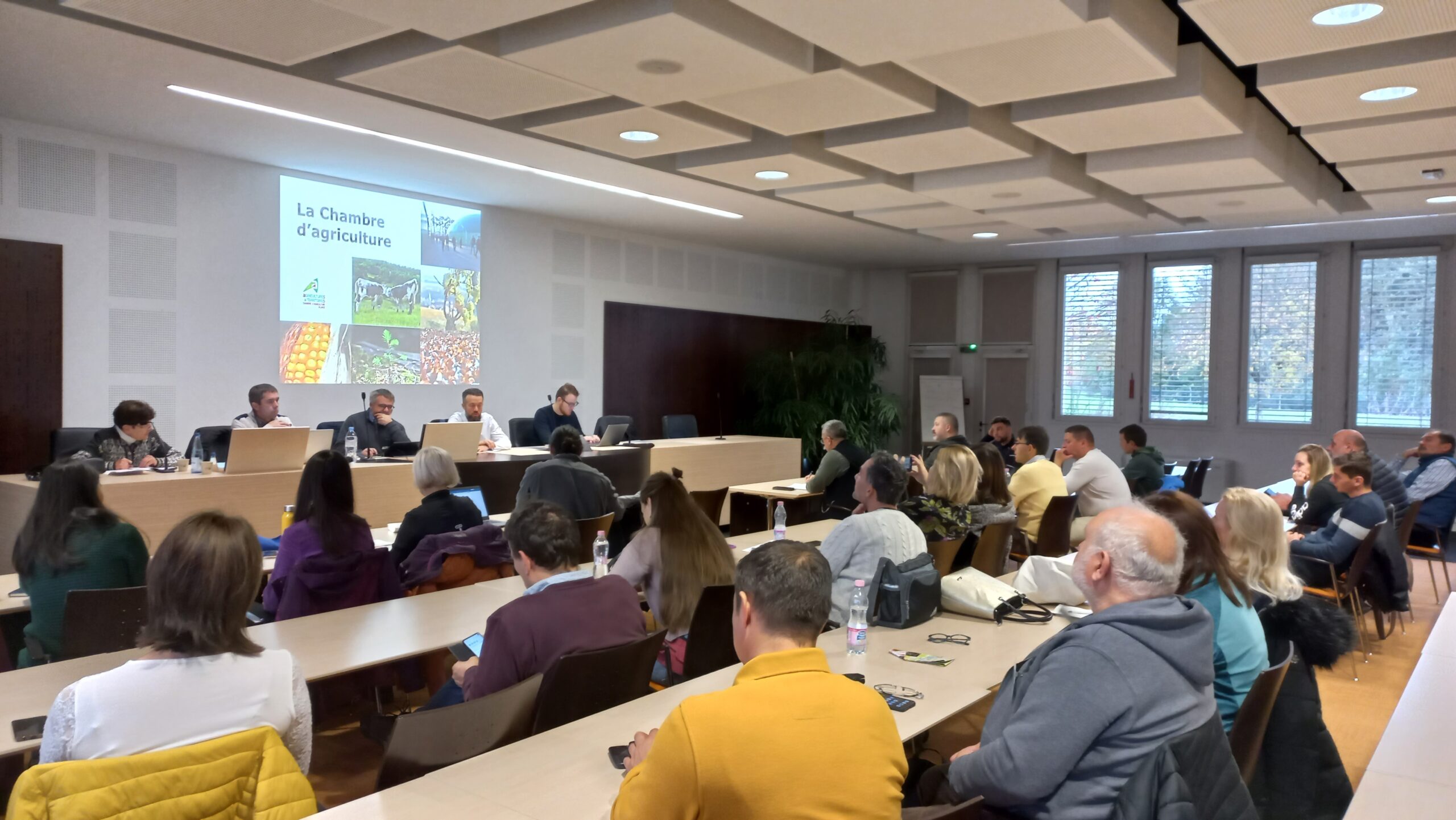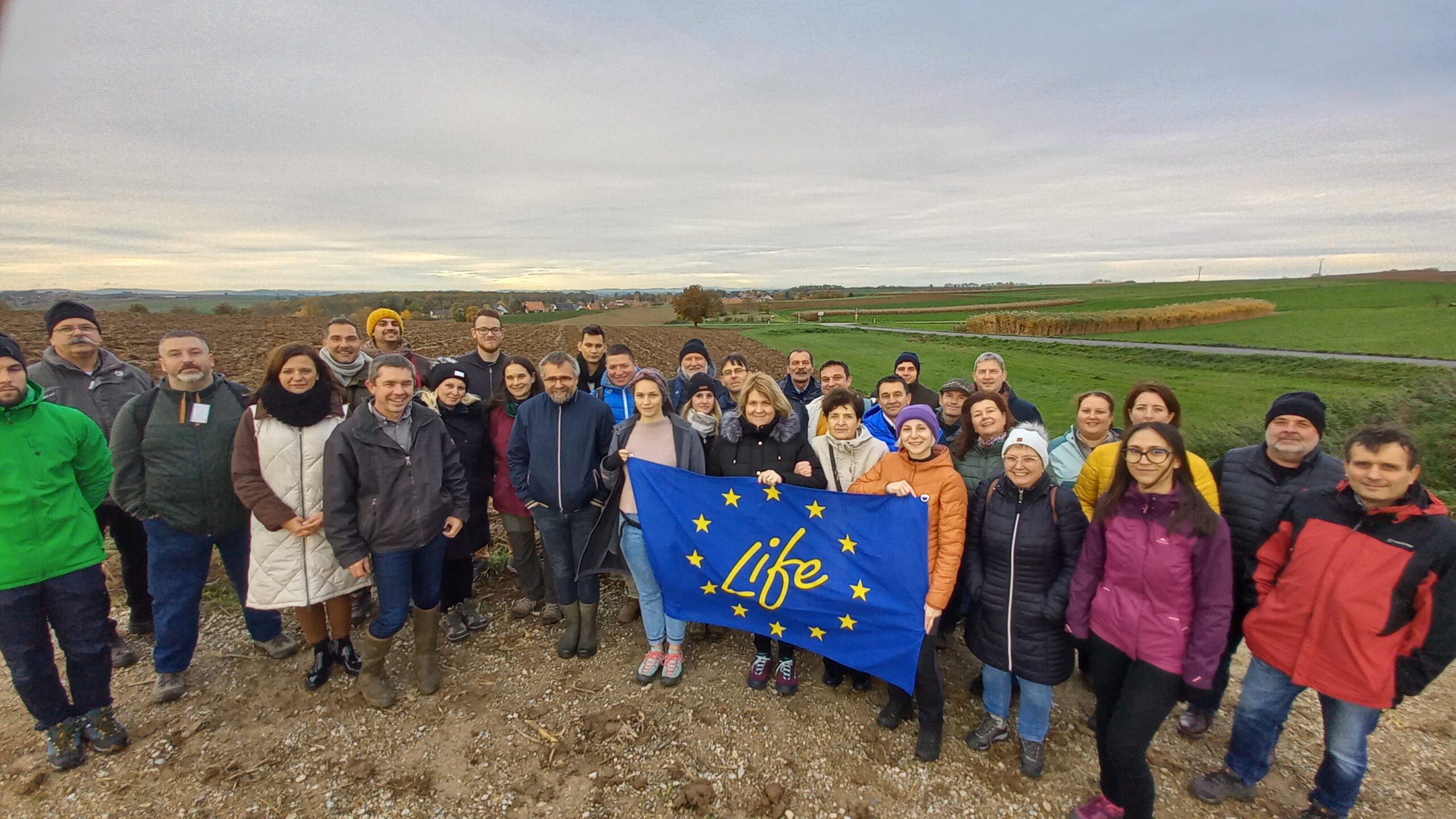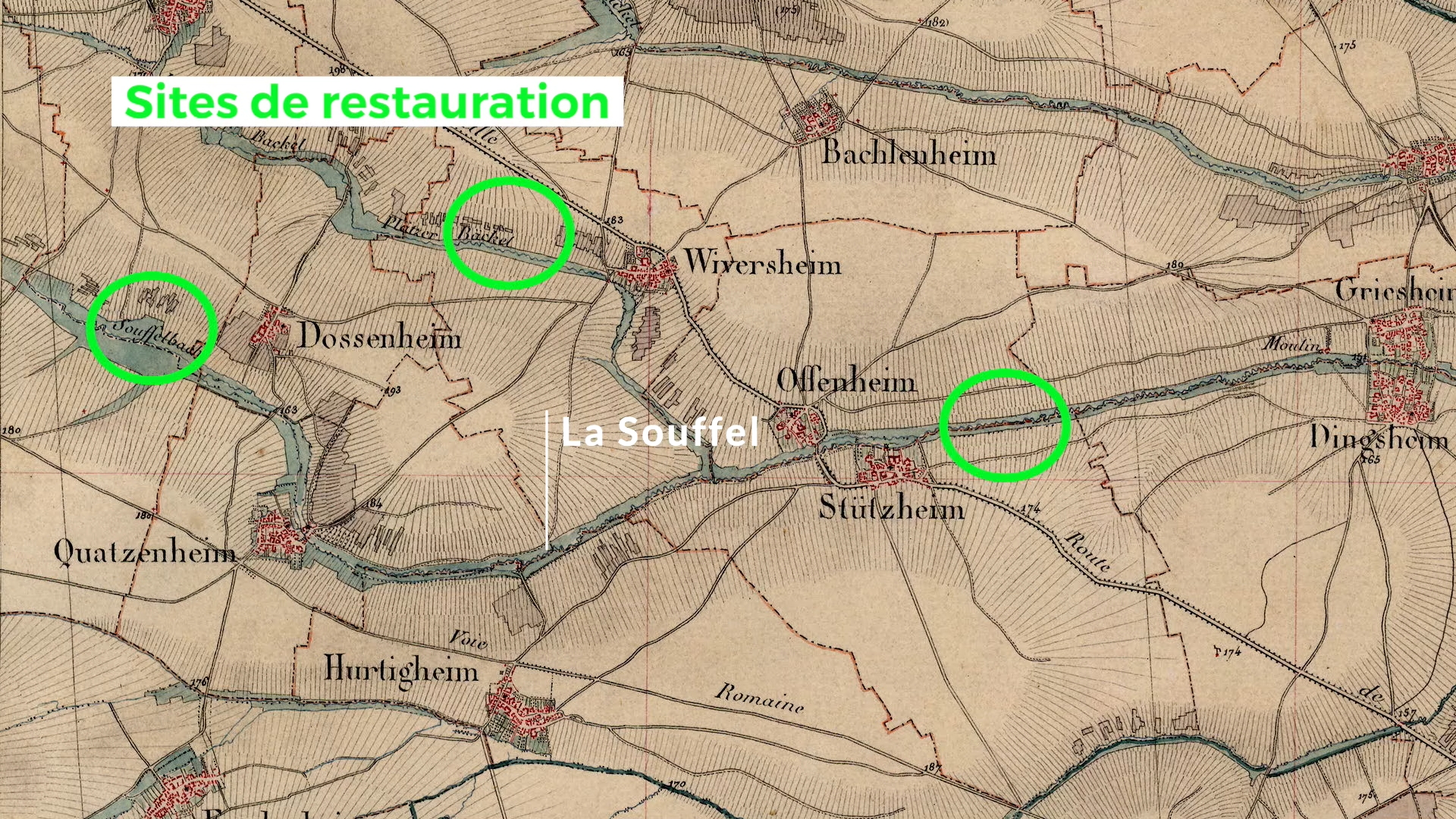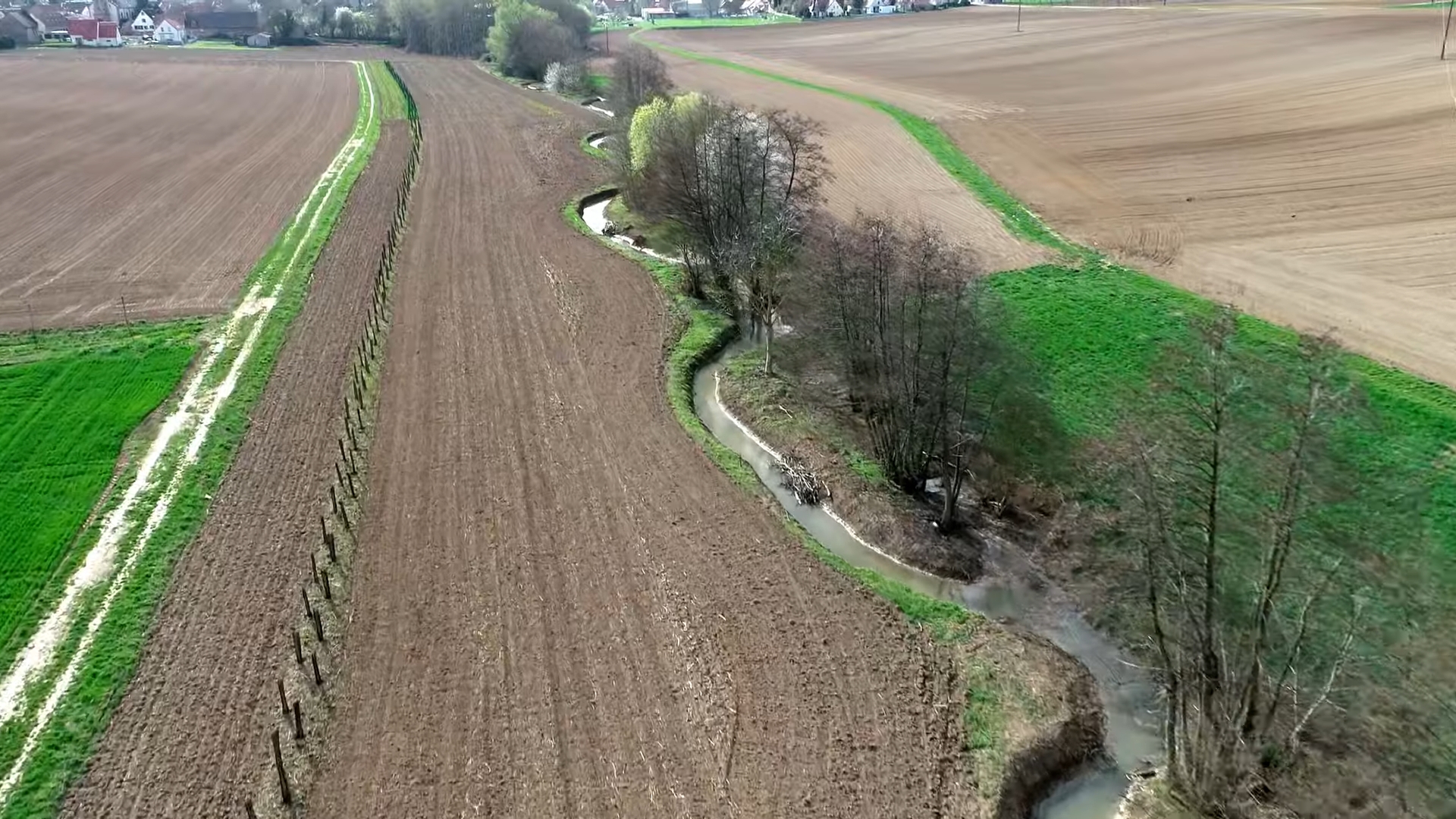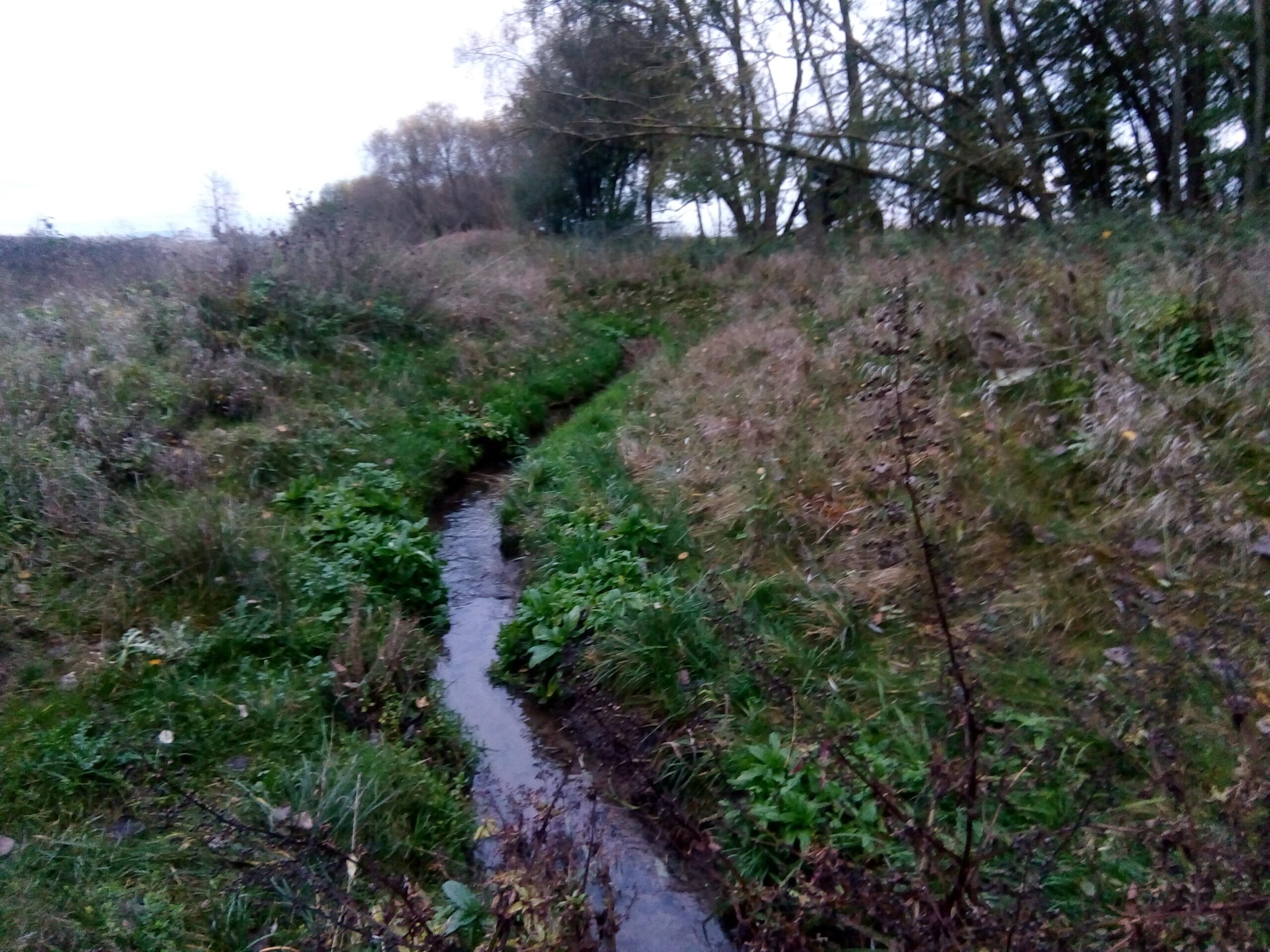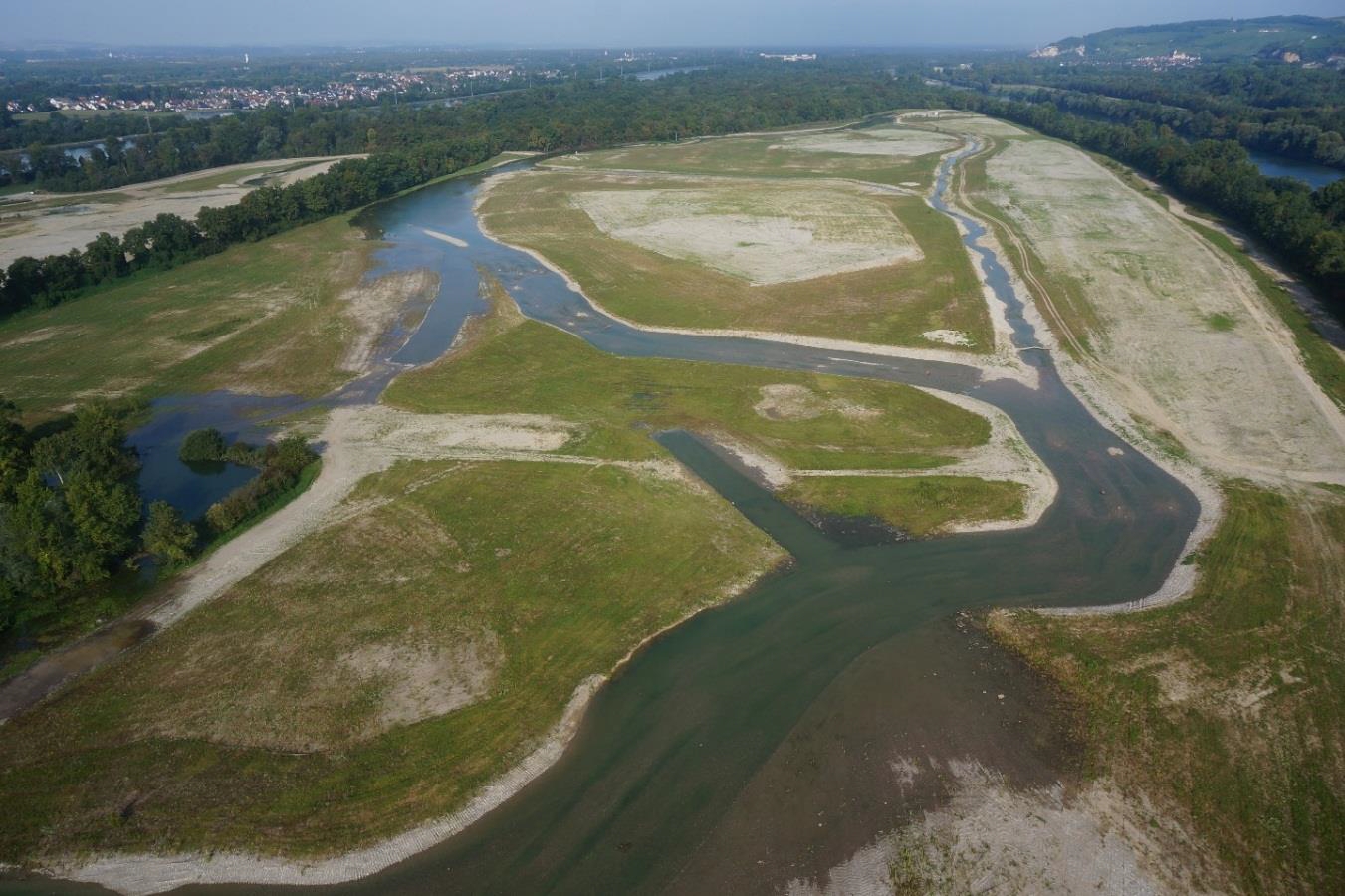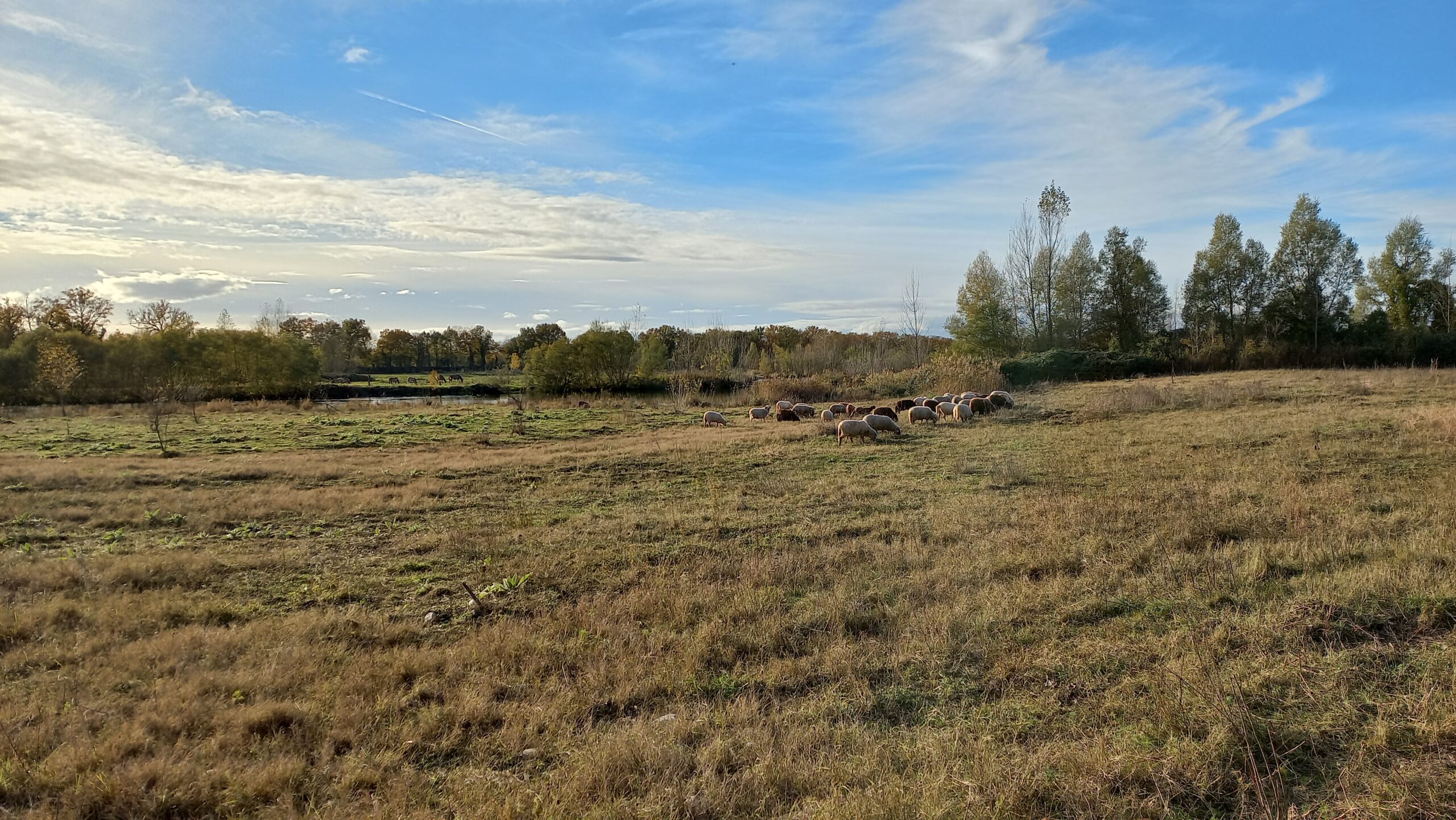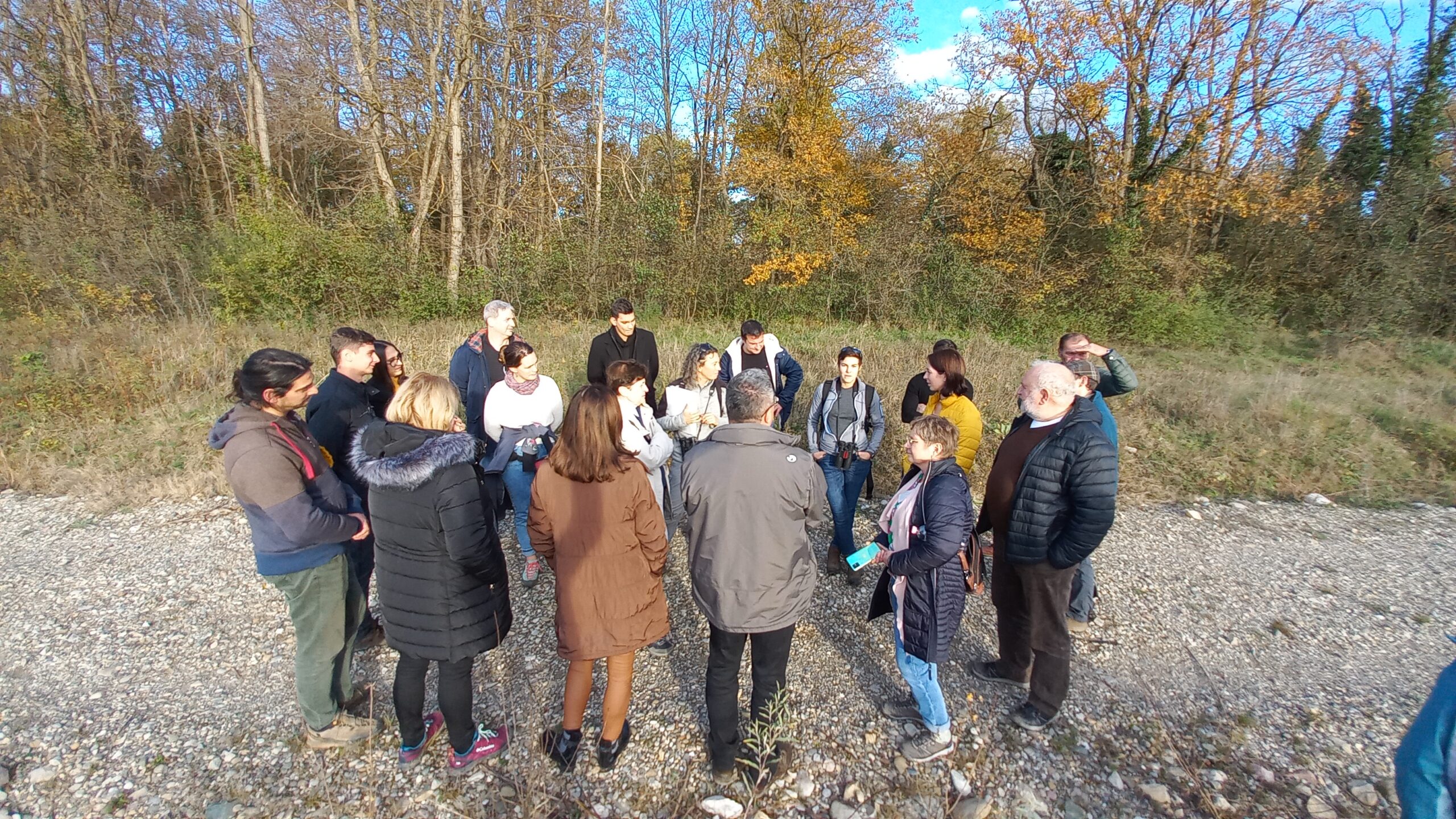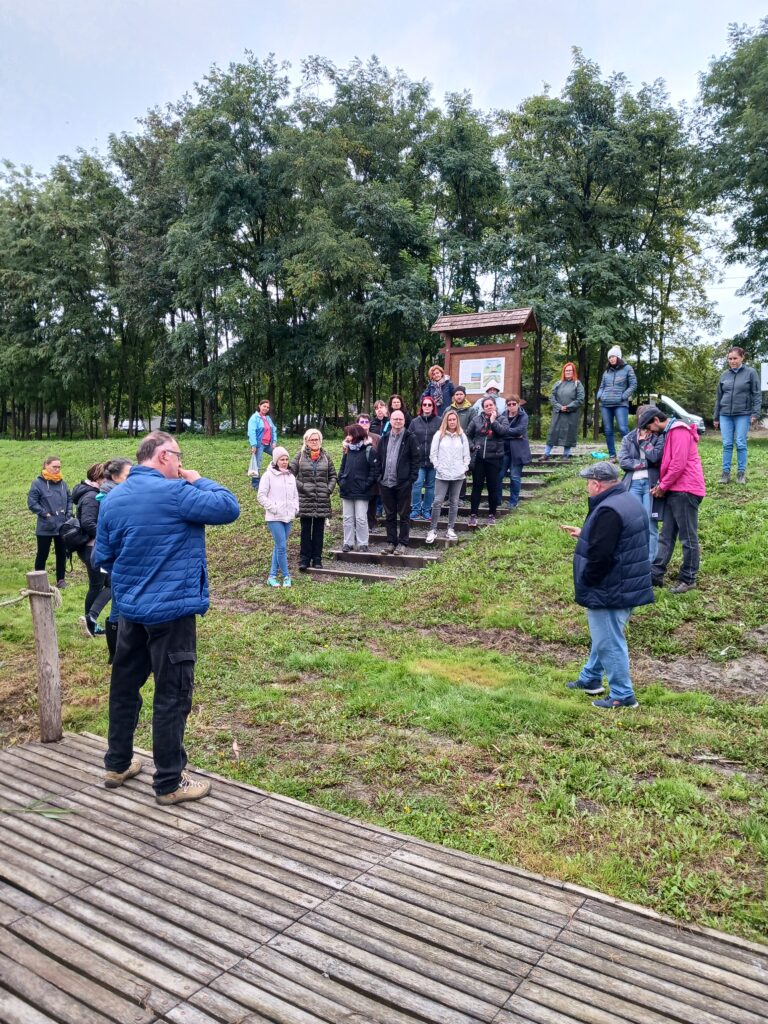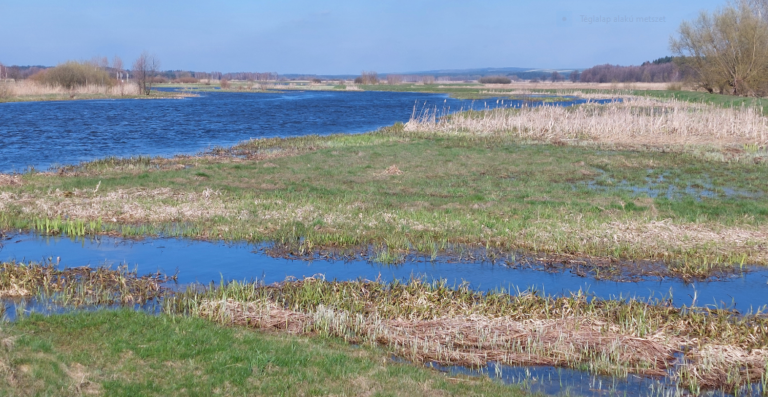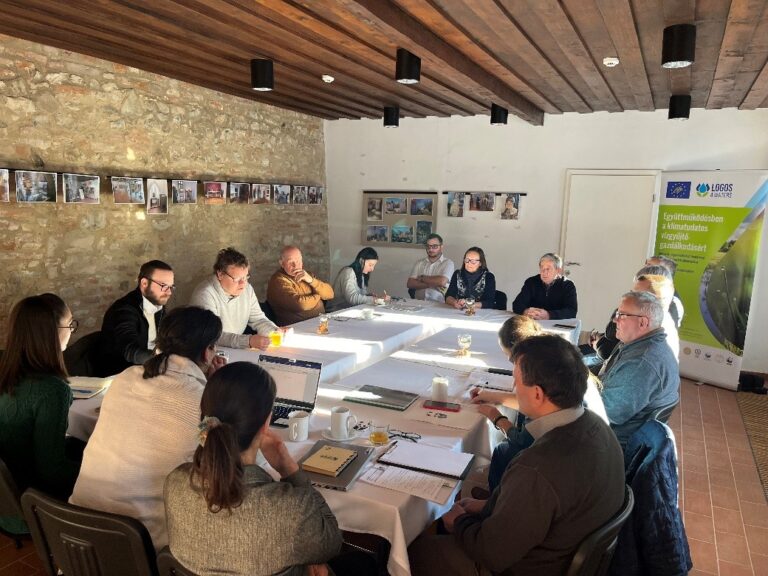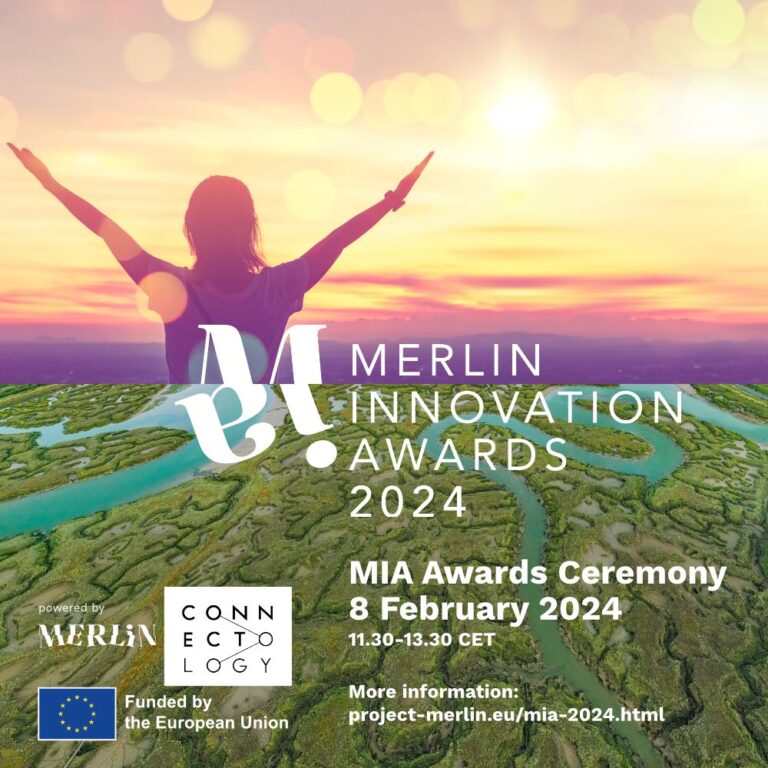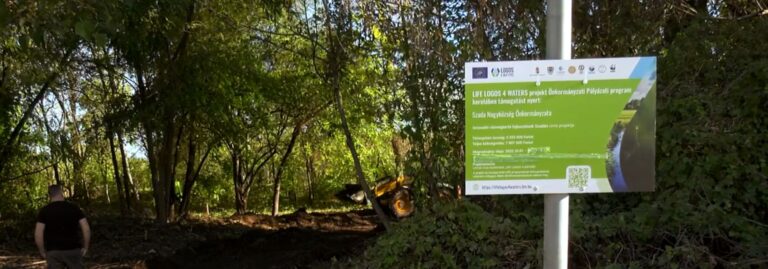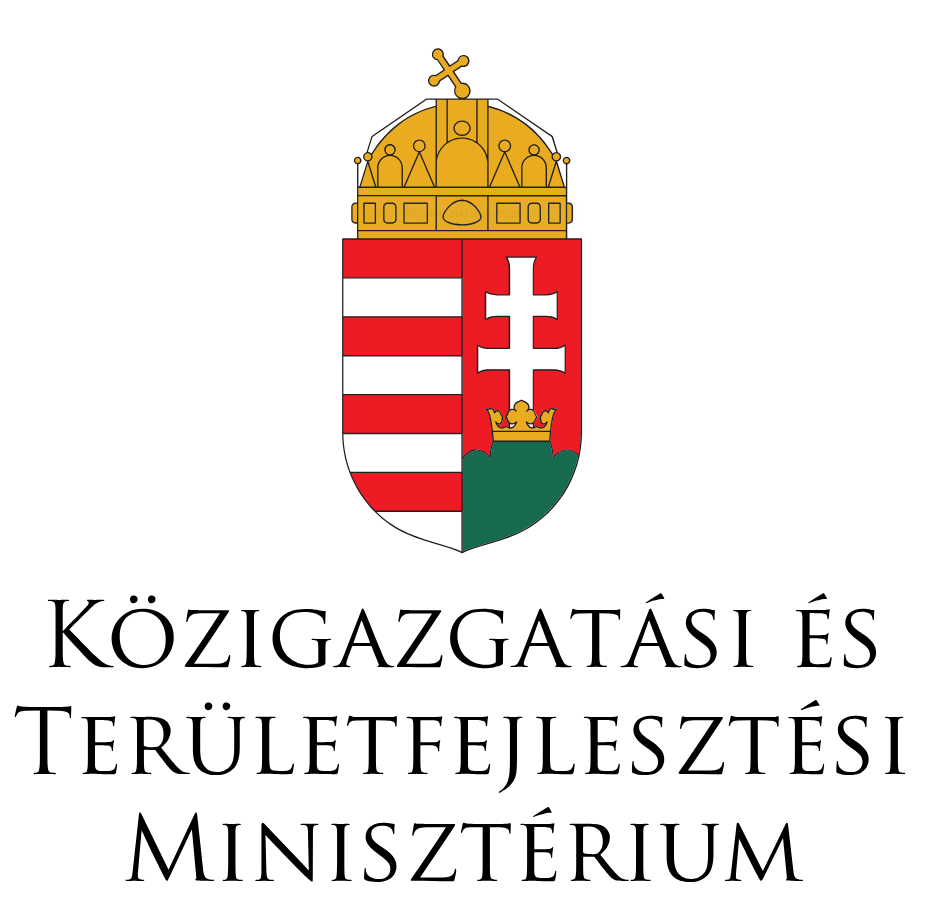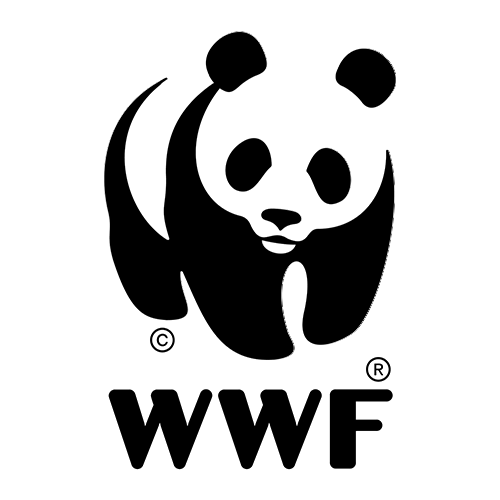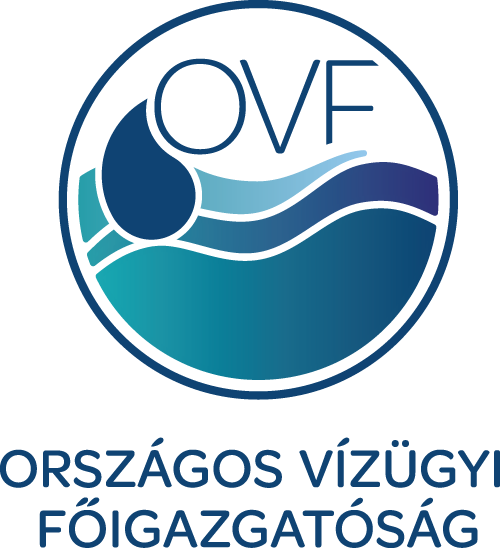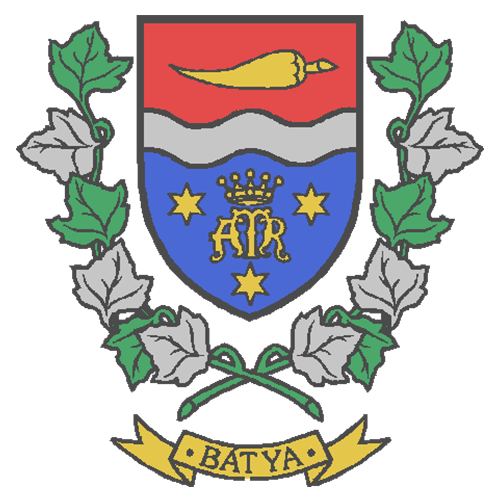Water retention measures applied in intensively cultivated agricultural landscapes were presented to the group made of Hungarian municipalities’ representatives and professional organisations’ colleagues during a study trip in the Lower Rhine region between 13 and 16 November 2022.Within the framework of the LIFE LOGOS 4 WATERS project, the aim of the international study trip is to visit nature-based solutions, exchange experiences and bring good practices back home to Hungary.
The team arrived in Strasbourg by overnight train. This significantly reduced the ecological footprint of our journey, as travelling by train produces on average 14 time less carbon dioxide emission than flying. Like Hungary, Lower Rhine County has undergone a huge agricultural transformation in recent decades. As agricultural production increased, extensive livestock farming declined, and between 1979 and 2000, 44% of pastures and mowed fields disappeared and were converted into arable land. The water retention capacity of ploughland is negligible compared to that of grassland, especially when the soil is bare. This process increases soil erosion and mudflows in the municipalities around Strasbourg as a result of the intense rainfall events caused by climate change. The strongest motivation for launching the programme initiated by the Alsatian Chamber of Agriculture was the damage caused to roads and municipalities by such mudslides.
Our hosts were the Alsace-Moselle Water and Water Management Association and the Alsatian Chamber of Agriculture. While the former is responsible for water management in the region and financing the project, the latter’s responsibility lies in involving farmers and coordinating their activities to prevent mudslides. Soil erosion and run-off are controlled by so-called ‘gentle interventions’: planting of live and dead meres and hedgerows on sloping fields, grass strips, strip-tillage in a coordinated pattern at catchment level, or no-tillage.
Experience has shown that different solutions are effective in different ways: grass strips are the most effective at infiltrating water, while ‘dead’ mere and densely planted ‘live’ shrub meres are more suitable for retaining sediment. For this reason, local experts have recommended a combination of different solutions.
Farmers will be compensated for the interventions on their land according to already existing rules and frameworks. In addition, farmers are aware of the reason for the interventions, their conservation functions and their benefits for local communities, which is another important motivating factor.
The Alsace-Moselle Water and Water Management Association also aims to restore wetlands and previously regulated watercourses, by ecologically rehabilitating several small watercourses – the Souffel stream and its tributaries – and creating floodable grassland alongside them.
On the second professional day of the study trip, the team followed the Rhine southwards to the Petite Camargue Alsacienne Nature Reserve. This nature reserve was created by rehabilitating former agricultural land and converting it into wetlands. It is now a tangle of woods, lakes and reed beds, where people from the surrounding towns come to relax. The area also serves as a water retention area for the Rhine.
The largest habitat rehabilitation project in the Petite Camargue Alsacienne Nature Reserve is the restoration of the former island and its tributary on the Rhine. This former tributary of the Rhine stretches over an area that was formerly partly forested and partly cultivated for 40 years. It has been restored over a length of 8 km, allowing a flow of 7 m3 /second to be introduced into the tributary.
The Hungarian group was told by Philippe Knibiely, Director of the Nature Reserve, and Léa Merckling, Conservation Officer, that during the restoration, the designers placed great emphasis on creating as many of the Rhine’s characteristic morphological features and habitats as possible: spawning grounds for salmonids and other fish that prefer the wading watercourse, and braided backwaters and tributaries along the watercourse. In the floodplain, mosaic habitats have been created, which are grazed extensively with different species. It is particularly interesting that these meadows are grazed mainly by a species of horse that is particularly fond of free grazing, with a lifestyle close to that of its wild ancestors. For this reason, the public can only admire the landscape and the animals from the lookouts outside the area. The impact of extensive grazing on habitats is being studied by Lilla Lovász, a Hungarian researcher at the University of Basel.
At the end of the field presentation, we also learned that they are already facing the negative effects of climate change here. Adaptation of wetlands to climate change is being promoted through a LIFE project, which is working with several national parks in France to find ways to protect natural assets in a changing climate.
We hope that by learning about and presenting good examples from abroad, we can help to strengthen cooperation between stakeholders at home and accelerate the spread of awareness of natural water retention measures.
Representatives of the following organisations took part in the study trip in the framework of the LIFE LOGOS 4 WATERS project:
- Lower Danube Valley Water Directorate
- Government Office of Bács-Kiskun County, Department of Environment, Nature Protection and Waste Management
- Municipality of Bátya
- Ministry of Interior, Coordination Office for Municipalities
- Municipality of Drágszél
- Municipality of Dusnok
- Municipality of Galgagyörk
- Municipality of Kisnémedi
- Municipality of Kosd
- Middle Danube Valley Water Directorate
- University of Agriculture and Life Sciences
- Hungarian Chambers of Engineers, Water Management and Hydraulic Engineering Section
- Hungarian Chamber of Agriculture
- University of Public Service, Faculty of Water Sciences
- General Directorate of Water Management
- Municipality of Penc
- Government Office of Pest County, Department of Environment, Nature Protection and Waste Management
- Government Office of Pest County, Department of Plant and Soil Protection
- Municipality of Püspökhatvan
- Municipality of Püspökszilágy
- Municipality of Vácduka
- Foundation for Vácduka
- Municipality of Váckisújfalu
- WWF Hungary
- Zongorhát Ltd.
Written by Nikolett Deák and Klára Kerpely Kerpely, WWF Hungary Foundation
